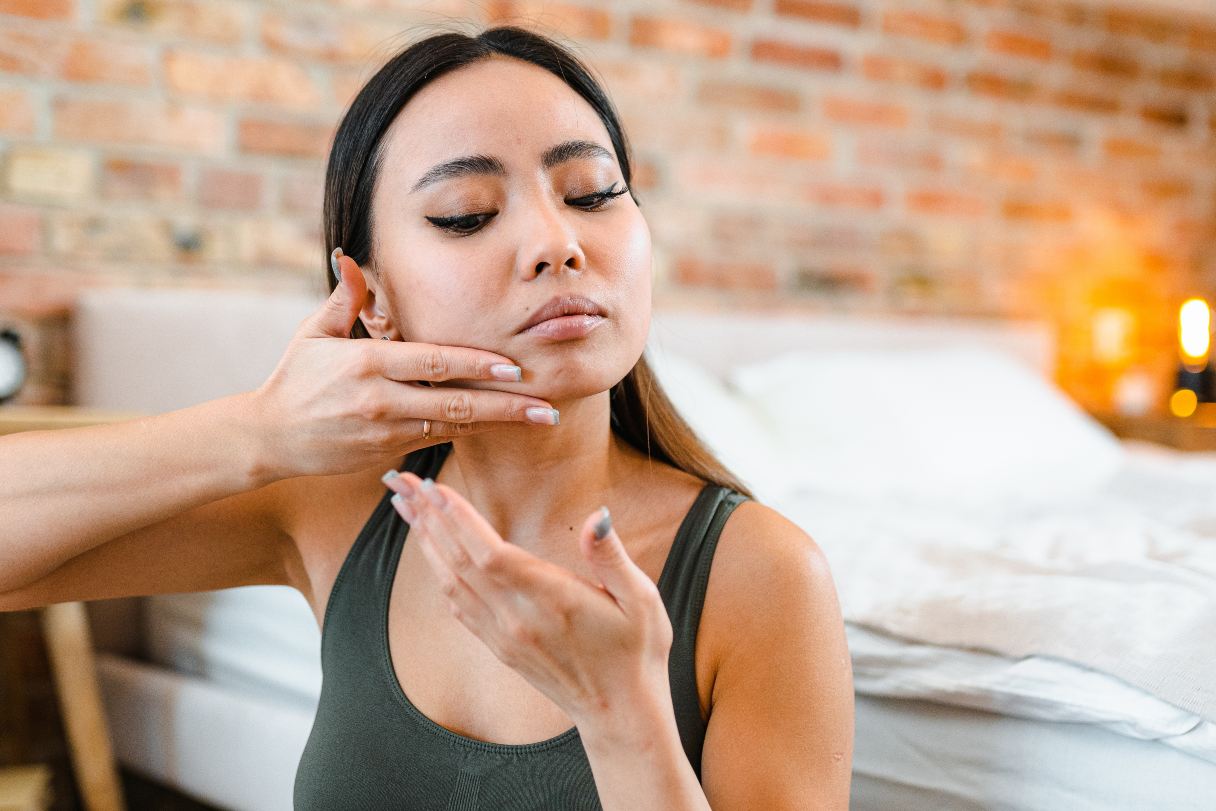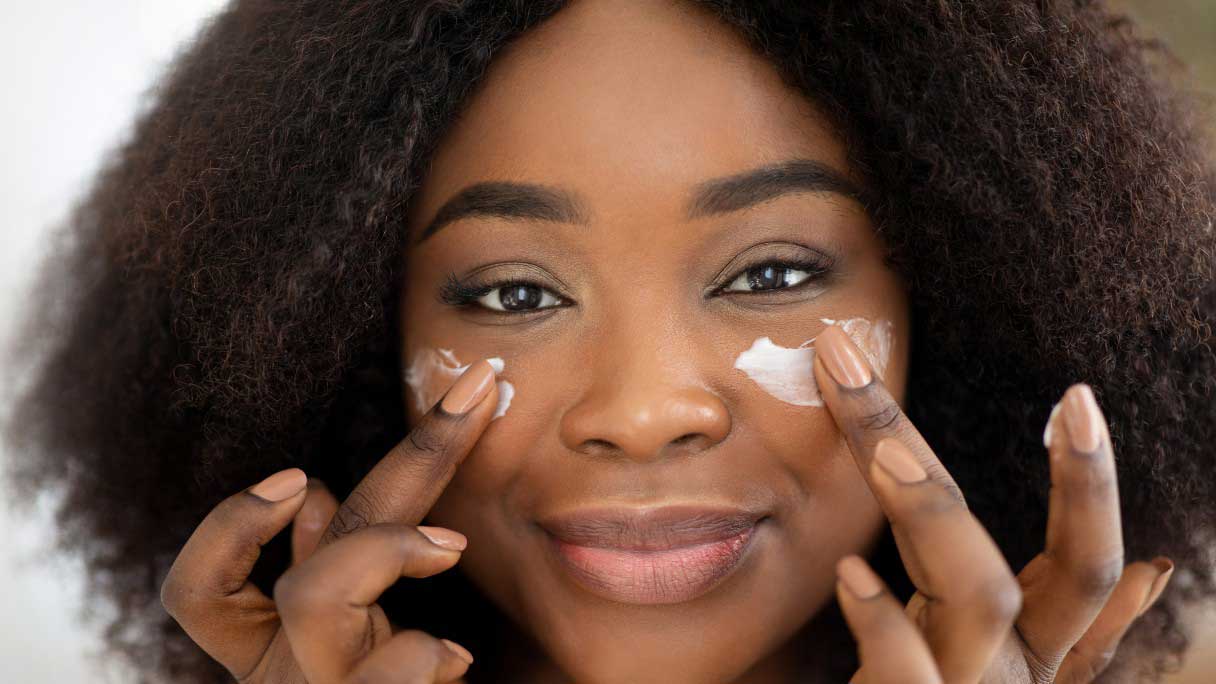You’ve probably heard of yoga, an ancient physical and spiritual practice from India that aims to benefit your body, mind and spirit.1 But how about face yoga? This related practice derives from traditional yoga, with a focus on exercises and breathing techniques for the face.1 Among its many benefits, it’s a non-invasive treatment that can contribute to a smoother, younger facial appearance.2
What Is Face Yoga?
Face yoga is a series of facial exercises coupled with breathing and massage techniques that may help reduce pain, provide relaxation and reduce inflammation. While traditional yoga dates back thousands of years, face yoga has developed more recently, emerging from practices like trigger point and massage therapy.1
Benefits
Externally, face yoga may be able to improve facial features and contribute to a more youthful appearance, such as a sleeker jawline and an overall smoother or plumper facial appearance. However, even if you don’t achieve those results, face yoga may still contribute to internal states of calm and relaxation akin to meditation. It can be useful for reducing muscle tension, encouraging mindfulness, promoting healthy habits and improving sleep.5
Studies have shown that the techniques associated with face yoga — such as manipulating soft tissue, engaging in facial exercises and practicing breathing techniques — can promote tissue healing, reduce inflammation and activate muscular energy metabolism (in essence, relaxing muscles), though results of face yoga may vary.1 Today, face yoga is considered another way to help achieve or maintain a more youthful appearance.
How it works
Much like traditional yoga for the body, face yoga involves activating your facial muscles.3 You have approximately 60 muscles in your face (depending on how they’re counted).4 These muscles can be toned and exercised through strategic movements.2
You can work with a certified face yoga practitioner to design a program that addresses your desired outcomes.3 It can take around three to four weeks of regular practice to see the best results.5
Face Yoga’s Effects on Appearance
Though research is limited on the results, those who teach and promote face yoga note that by strengthening facial muscles — which may increase blood circulation and promote collagen production — you can contribute to a plumper, more toned and more youthful appearance.5
Face yoga can potentially help:3
-
Achieve a more symmetrical smile
-
Contribute to facial symmetry
-
Promote younger-looking face and skin
-
Reduce puffy or swollen eyes
-
Reduce wrinkles
-
Tighten and tone skin
-
Tighten your neck and jawline
It’s important to point out that there are no guarantees of achieving these effects, and results will vary due to factors such as genetics, body weight and skin elasticity. Also, daily facial yoga could potentially lead to more wrinkles.5
What Are the Tools of Face Yoga?
All you really need to practice face yoga is your face and hands, but some practitioners recommend the additional use of tools such as face rollers. Face rollers are handheld devices fitted with cool jade stones that can be rolled across the facial skin in strategic motions. They derive from a beauty technique in China known as "gua sha."2
Research is inconclusive as to whether the facial roller is any more effective than hands or facial exercises alone, but using a facial roller may increase blood flow and lymphatic fluid flow, which could contribute to antiaging effects.2
5 Face Yoga Exercises for Saggy Skin
Face yoga exercises are tailored to each person, depending on the outcomes they want to achieve. However, there are some recommended exercises to tone key parts of the face:6
1. Upper eye exercise
This exercise may help with upper eyelid drooping due to sagging skin.
Place your three middle fingers beneath your eyebrows. Push your eyebrows up with your fingertips while simultaneously pressing down with your forehead muscles. Hold this for 10 seconds, closing your eyes for the final three seconds. Relax and repeat two to three more times.
2. Cheekbone sculpting exercise
This exercise may help your cheekbones look more defined.
Place your fingers on your cheekbones to lift the skin to a taut state. Then, make an O shape with your mouth until you feel resistance in your cheek muscles. Hold this for five seconds and repeat 10 to 15 times.
3. Forehead exercise
This exercise may help reduce wrinkle formation in the forehead.
Use your index finger to pull your forehead muscle down while you also lift your eyebrows. Hold for 10 seconds and repeat up to five times.
4. Jawline exercise
This exercise may help tone and tighten your jawline and lessen the appearance of a double chin.
Tilt your head back until you’re looking directly up at the ceiling. Stretch your lower lip forward past your upper lip as far as possible. You’re doing it right if you feel it stretch the jaw muscles by your ears. Hold for 10 seconds and repeat 10 to 15 times.
5. Eye wrinkles exercise
This exercise may help minimize the wrinkles at the edges of your eyes, known as crow’s feet.
Place the pads of your thumbs on the bones located at the outer corners of your eyes. With just your eyes, look up while pressing your thumbs in toward your eyes. Flutter your eyelids for about five seconds, and then relax. Repeat three times.
Adding Face Yoga to Your Skincare Routine
So long as you do not have an injury or disability that prevents you from moving the muscles of your face, face yoga is safe enough for anyone to do.2 Every face yoga practitioner may take a different approach, but one suggested routine is to:5
-
Educate yourself on the expectations and limits of face yoga and skin elasticity.
-
Begin with exercises that focus on the areas you most want to see a change. You may want to seek a face yoga practitioner to establish a list of exercises specific to your desired outcomes.
-
Practice daily for five to 10 minutes.
-
Monitor your results and photograph them.
-
Expect to practice for at least three to four weeks before you see results (and consider pausing after a while so as not to overdevelop muscles).
Face yoga is a gentle, non-invasive way to tighten and tone the muscles of your face. With consistent practice and realistic expectations, it’s a great addition to any beauty or facial care routine.
Managing Health and Wellness Costs With the CareCredit Credit Card
If you are looking for an option to help manage your health and wellness costs, consider financing with the CareCredit credit card. The CareCredit credit card can help you pay for the care you want and need and make payments easy to manage.* Use our Acceptance Locator to find a provider near you that accepts CareCredit. Continue your wellness journey by downloading the CareCredit Mobile App to manage your account, find a provider on the go and easily access the Well U blog for more great articles, podcasts and videos.
Your CareCredit credit card can be used in so many ways within the CareCredit network including vision, dentistry, cosmetic, pet care, hearing, health systems, dermatology, pharmacy purchases and spa treatments. How will you invest in your health and wellness next?
Author Bio
Jordan Rosenfeld has been freelance writing for 21 years about finances, health, education and more. Her work has appeared in The Atlantic, The Billfold, Good Magazine, GOBankingRates, Daily Worth, Quartz, Medical Economics, The New York Times, PayPal, The Washington Post and more.








